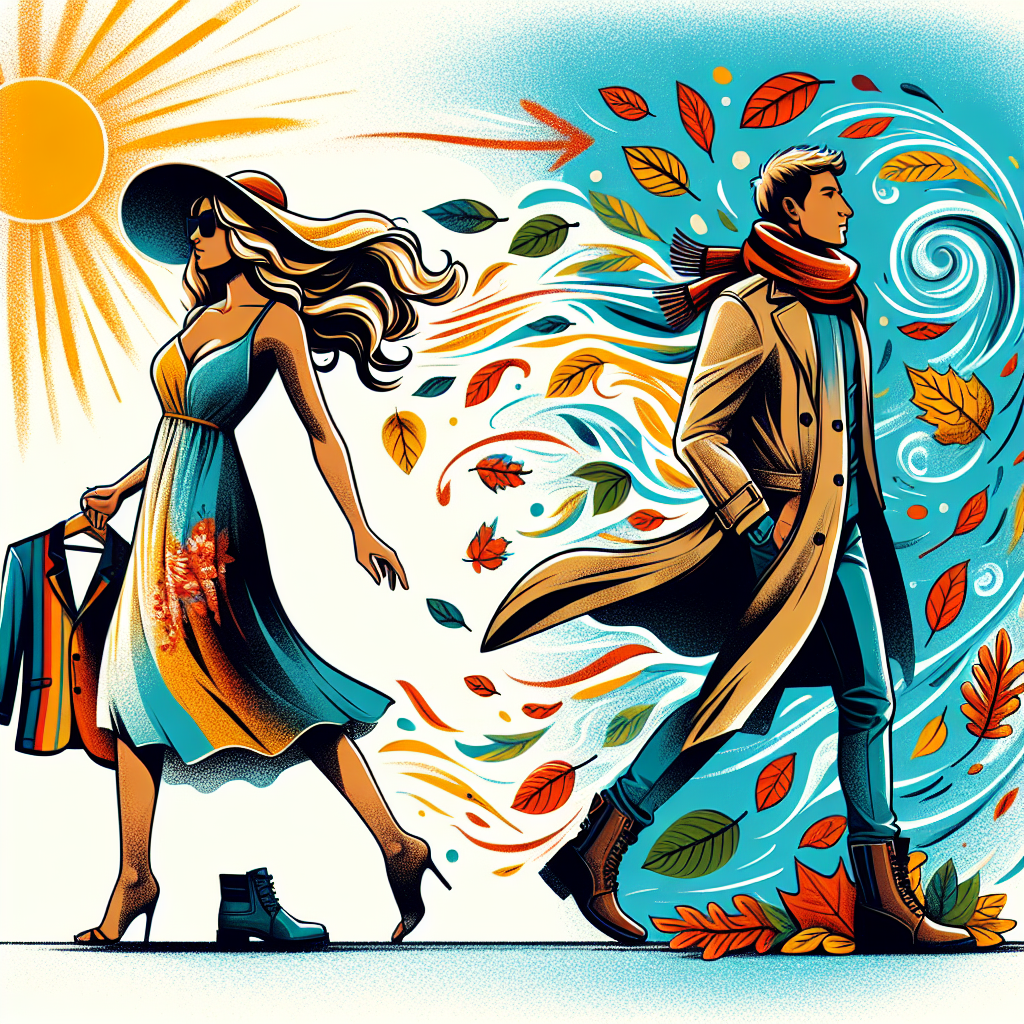Layering Basics for Fall
Transitioning from summer to fall means rethinking how layers work in your wardrobe. Start with lightweight materials like cotton or linen, which are versatile for layering. Begin with your favorite summer tops—tank tops and short-sleeve blouses pair well with cardigans or light jackets. Opt for neutral colors that blend seamlessly with your fall palette, allowing easy mixing and matching.
Investing in Staple Pieces
To facilitate your transition, investing in staple pieces is crucial. A classic denim jacket or a tailored blazer can serve as a foundational layer over summer favorites. Choose a color that complements your wardrobe; a timeless black or navy blazer works well. Also, consider adding a long, oversized cardigan—perfect for the unpredictable fall weather and an effortless transition from daytime outings to cozy evenings.
Seasonal Color Palette
When transitioning your wardrobe, switching to a seasonal color palette elevates your outfit options. Earthy tones like burnt orange, deep greens, and rich browns are staples for fall. Incorporate these colors into your accessories, such as scarves and hats, for an immediate update to your summer clothing. Pair a bright summer dress with an olive belt and matching shoes, effortlessly adapting it to fall.
Footwear Shift
As temperatures drop, it’s essential to rethink your footwear. Swap flip-flops and sandals for ankle boots or stylish loafers. Ankle boots come in various styles; seek options that balance comfort and elegance. Look for pairs in shades of tan or black for maximum versatility. If you love casual looks, sneakers can transition as well by pairing them with ankle-length pants and a light jacket.
Accessorizing Wisely
Accessories are vital when transforming your wardrobe. Invest in lightweight scarves, which can add color and warmth without bulk. Opt for materials like cashmere or wool for cooler days. Layering necklaces or pairing hats with your outfits can add personality and depth, allowing your summer pieces to shine in a new context.
Mixing Textures
Diversity in textures can enhance your fall wardrobe significantly. Combine cotton shirts or dresses with textured pieces like corduroy or leather. This adds dimension to your outfits and makes them visually appealing. For instance, wearing a flowy cotton dress with a leather jacket creates a contrasting but harmonious look perfect for fall.
Embracing Midi Lengths
As summer fades, consider adding midi skirts and dresses into your outfit rotation. They offer perfect coverage for cooler weather and can be paired with ankle boots for a stylish look. Layer a knit sweater over a classic midi dress to keep your style contemporary while accommodating fluctuating temperatures. Midi lengths also work well with tights during the chillier months.
Layering with Outerwear
Outerwear plays a significant role in the wardrobe transition to fall. Choose a trench coat or a stylish puffer jacket for those unpredictable rainy days. These outerwear options can be layered over lighter summer tops without feeling bulky. Invest in a quality piece that coordinates with various outfit styles for multifunctionality, keeping you stylishly cozy.
Transitioning Fabrics
Pay close attention to the fabric materials in your wardrobe. As the season changes, move away from lightweight fabrics and focus on heavier materials like wool blends, knits, and thicker cotton. A cozy knit sweater paired with denim provides warmth and comfort without sacrificing style during cool evenings.
Creating a Capsule Wardrobe
For a smooth transition, consider creating a capsule wardrobe incorporating key summer pieces alongside new fall essentials. Aim for items that are easily interchangeable, making outfit creation simple and stress-free. This strategic approach eliminates overloading your closet while ensuring you have fresh looks available for all occasions.
Utilizing Layering Techniques
Understanding effective layering techniques is essential to maximize your wardrobe. Start with a base layer that maintains a streamlined silhouette. Use fitted tops or bodysuits as your foundation, then introduce a mid-layer like a cardigan or shirt. Finish with outerwear that ties the look together without drowning out your ensemble.
Utilizing Bold Prints
To keep your style vibrant as seasons change, don’t shy away from bold prints. Patterned blouses, floral midi skirts, or plaid trousers can transition gracefully into fall. Pair these printed items with neutral knits or outerwear. The key is balancing the print to maintain a cohesive look while embracing seasonal trends.
Wardrobe Maintenance
As seasons shift, taking care of your wardrobe becomes essential. Ensure summer items are cleaned, packed, and stored appropriately to preserve their quality. Similarly, assess fall and winter staples for any repairs needed. Investing time in upkeep contributes to a sustainable wardrobe and allows you to enjoy your pieces for years.
Planning Seasonal Outfits
Before the colder months hit full force, planning seasonal outfits can maximize your wardrobe’s potential. Create outfits ahead of time for various occasions—work, casual outings, or special events—using your transitioning pieces. This strategic approach will ease weekday morning stress, providing a sense of readiness for any gathering.
Recognizing Body Shape Adaptations
Every season calls for adjustments based on body shape shifts. As temperatures and activities change, understand which clothing styles flatter your physique. Experiment with different cuts for trousers and dresses to see what balances your frame. Opt for tailored pieces that maintain sophistication while still feeling comfortable.
Budgeting for Transitioning
Finally, budgeting for your wardrobe transition is vital. Identify any gaps in your collection during summer clearance sales. Allocate a dedicated budget for staple pieces and accessories that will add longevity to your outfits. This thoughtful spending ensures you can transition your wardrobe smoothly without overspending.



